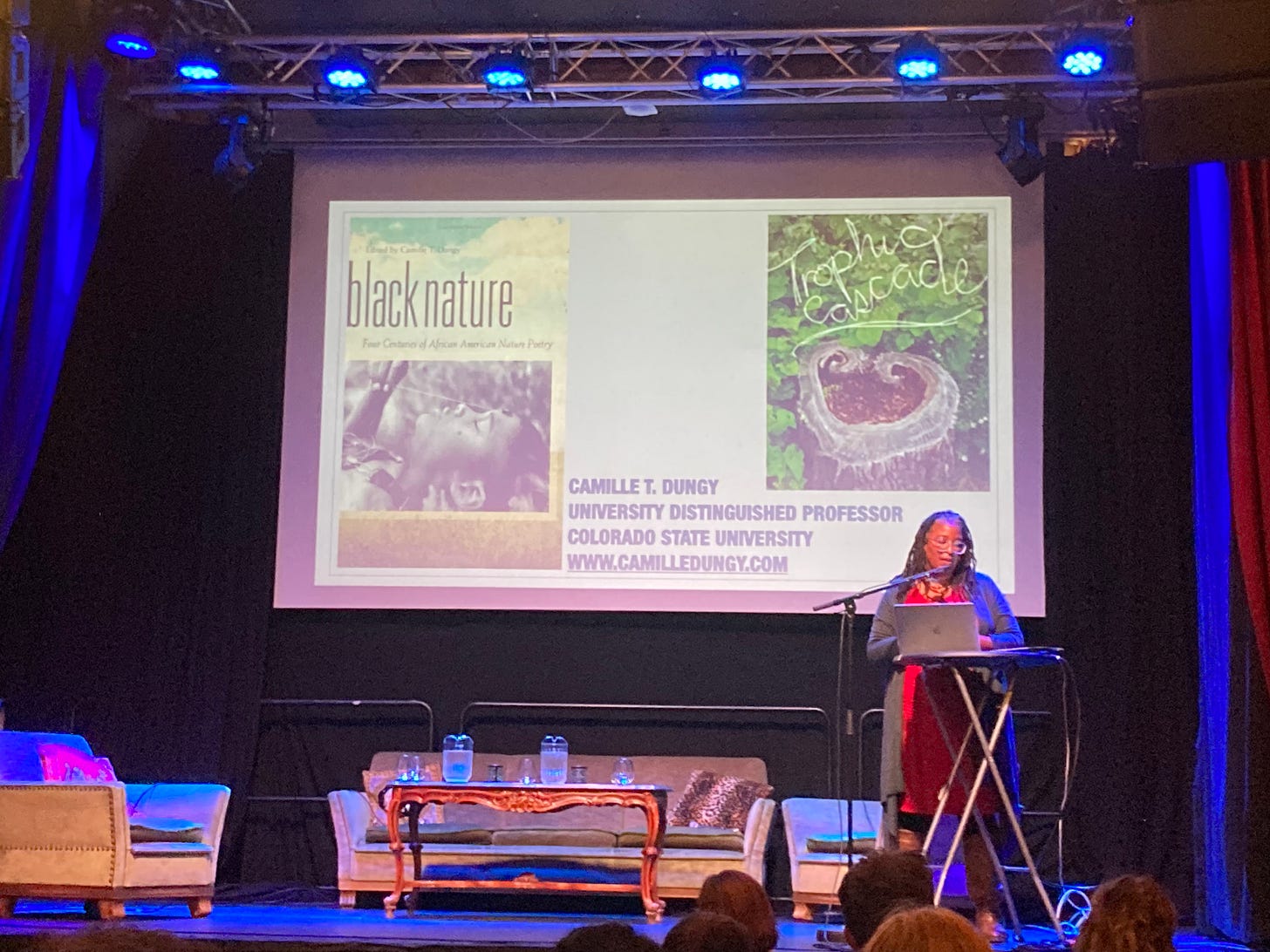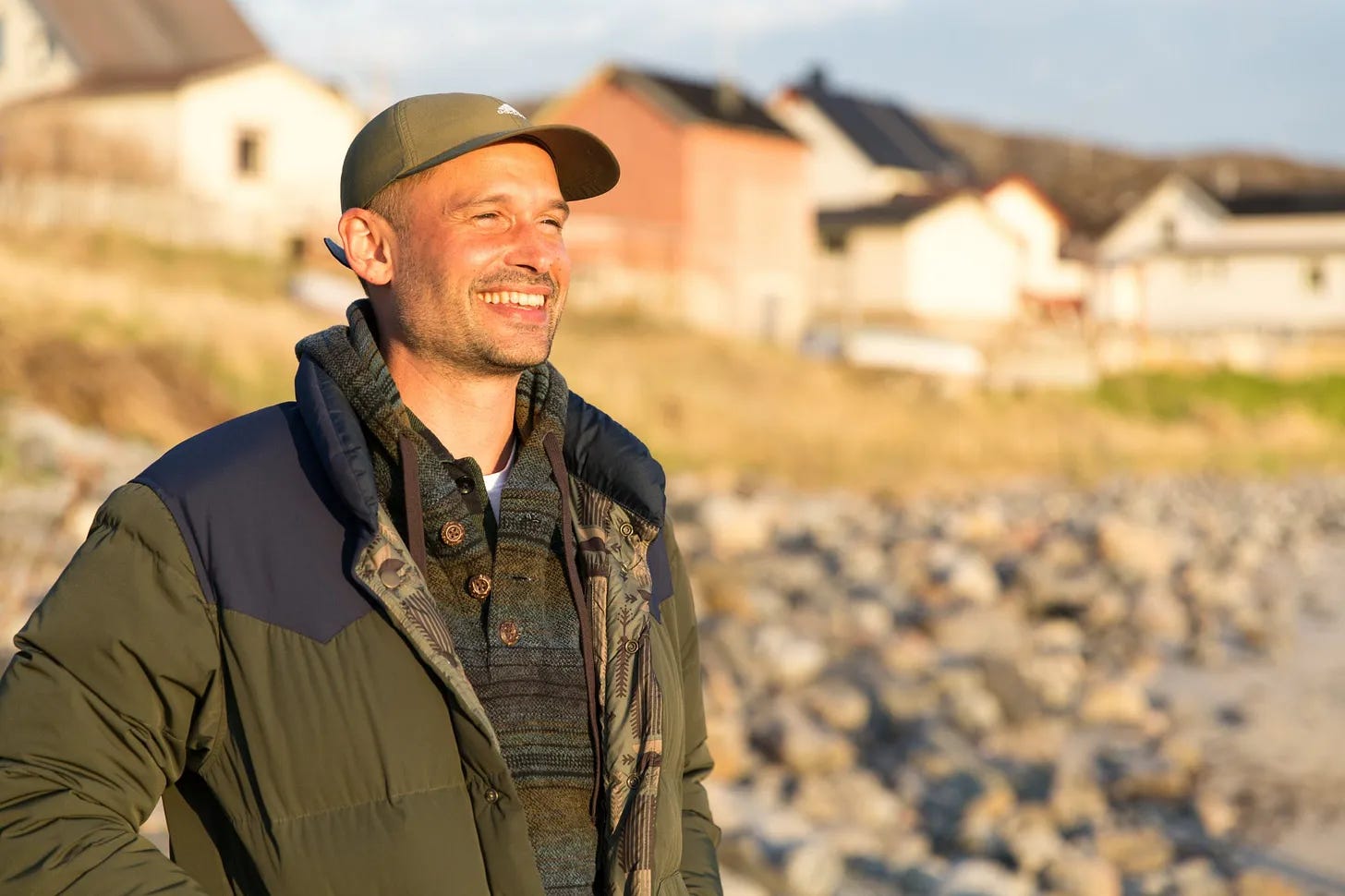Why subscribe to Wild Poetics?
“The ‘eco-’ of “ ecopoetics” is not a matter of “ representing” and, as it were, cheering for “nature,” but rather in disclosing how the “ eco-logical” dimension of literature and its poetics is not always where you think it is.”
— Cary Wolfe (2018). In “Never again would birds’ song be the same, or, ecopoetics when “there is no world.” Angelaki, 23(6), p. 76
I have a feeling I’ll be rewriting this ‘about page’ a few times, because I’m not quite sure what form or function this newsletter will take, but it starts with my curiosity about ecopoetry. As a researcher in ecolinguistics and environmental communication I’ve been fascinated with language, how it works (and how we work it), for quite a long time. In my other newsletter, Wild Ones, I share my journey through the ideas and research I come across in the broad field of environmental communication that I think others might find interesting or useful in their own life and work. With Wild Poetics, I’m really charting into unknown waters. Admittedly, I don’t know much about poetry in general, let alone ecopoetry. But I recently (in October 2023) had a brief encounter with an amazing ecopoet that made me realize there is a big world of ecopoetry I’m missing out on, and that I very much want to know more about.
So this newsletter is a chronicle of my exploration of the emerging poetic genre of ecopoetry and a growing community of ecopoets around the world. I’ll share poems, ideas, and tools for writing ecopoetry with readers that I learn about along the way. At this stage, I won’t be sharing my own ecopoetry here, so don’t worry:) Maybe someday I will, if I somehow unlock some new creative capacity in myself I was hitherto unaware of. What draws me into ecopoetry, though, is a deep sense that it is a form of using language that will be incredibly important for imagining new ways of attending to and experiencing the world that will be ever more needed in a time of interwoven socio-ecological crisis.
About the poet I met, Camille T. Dungy. Dungy was the keynote speaker at an event organized by the Oslo School of Environmental Humanities, and as a postdoc at the University of Oslo the past two years, I’ve been happily attending their events and learning a bit more about the diverse body of work contributing to the emerging field of environmental humanities. During her keynote, Dungy shared her poem, Trophic Cascade, which evokes imagery of the chain of events following wolf reintroduction in Yellowstone National park. I wrote about this phenomenon of trophic cascade after the reintroduction of wolves in Yellowstone in a 2022 edition of my newsletter, Wild Ones:
Wolf conservation biologists have shown that wolves create an ecologically beneficial ‘trophic cascade.’ In other words, as wolf populations begin to increase, they trigger a kind of ripple effect through the food chain, predating abundant elk populations by over fifty percent, which gives beavers, bison, new-growth aspen, and willow forests room to flourish.
This isn’t only because wolves predate more elk. Some conservation biologists have argued that wolf-created trophic cascades are due, at least in part, to the ‘ecology of fear’ wolves create through the predation risk their presence on the landscape signifies to elk. In turn, elk’s fear of wolves lead them to avoid certain areas, allowing space for other species to flourish, like beavers, foxes, eagles, and willow.
Dungy beautifully captures this cascading movement of consequences in her poem, but takes the reader to a new place at the end when she writes,
you tell me this is not the same as my story. All this life born from one hungry animal, this whole, new landscape, the course of the river changed, I know this. I reintroduced myself to myself, this time a mother. After which, nothing was ever the same.

My attention was perked by the shift in Dungy’s poem from an attentive tracking of the nonhuman cascading effects of species inhabiting the landscape, to tracking a similar process in herself, as if the self is a kind of natural landscape vulnerable or open to the beneficial trophic cascades of the ‘hungry animals,’ that we are. Especially when those cascades bring new life into the world, irreversibly transforming not just our sense of self — now a mother or a father— but expanding our orbit of attention and care. I really liked this poem, and think about it often.
While talking to Dungy, I mentioned I had received my PhD at the University of Hawai‘i, and she asked if I knew an ecopoet there, Craig Santos Perez, an English professor at the university. I hadn’t, but wish I had as I soon after looked into Perez’s incredible work researching, writing and teaching ecopoetry at UH Mānoa. I knew I needed to explore this world of ecopoetry more carefully and with more intention. So this newsletter was born. My aim is to publish bi-monthly in the beginning, and eventually weekly as I get this off the ground. As I am learning not just about ecopoetry, but how to write it myself, I’m especially looking forward to sharing the practices, techniques, and tools I come across that may be useful to ecopoets in their own creative work. So please subscribe below if this sounds like something you’d like follow along, it’s good to have your here. 😊
Cheers,
Gavin (you can learn more about me and my work here).
Stay up-to-date
You won’t have to worry about missing anything. Every new edition of the newsletter goes directly to your inbox.


